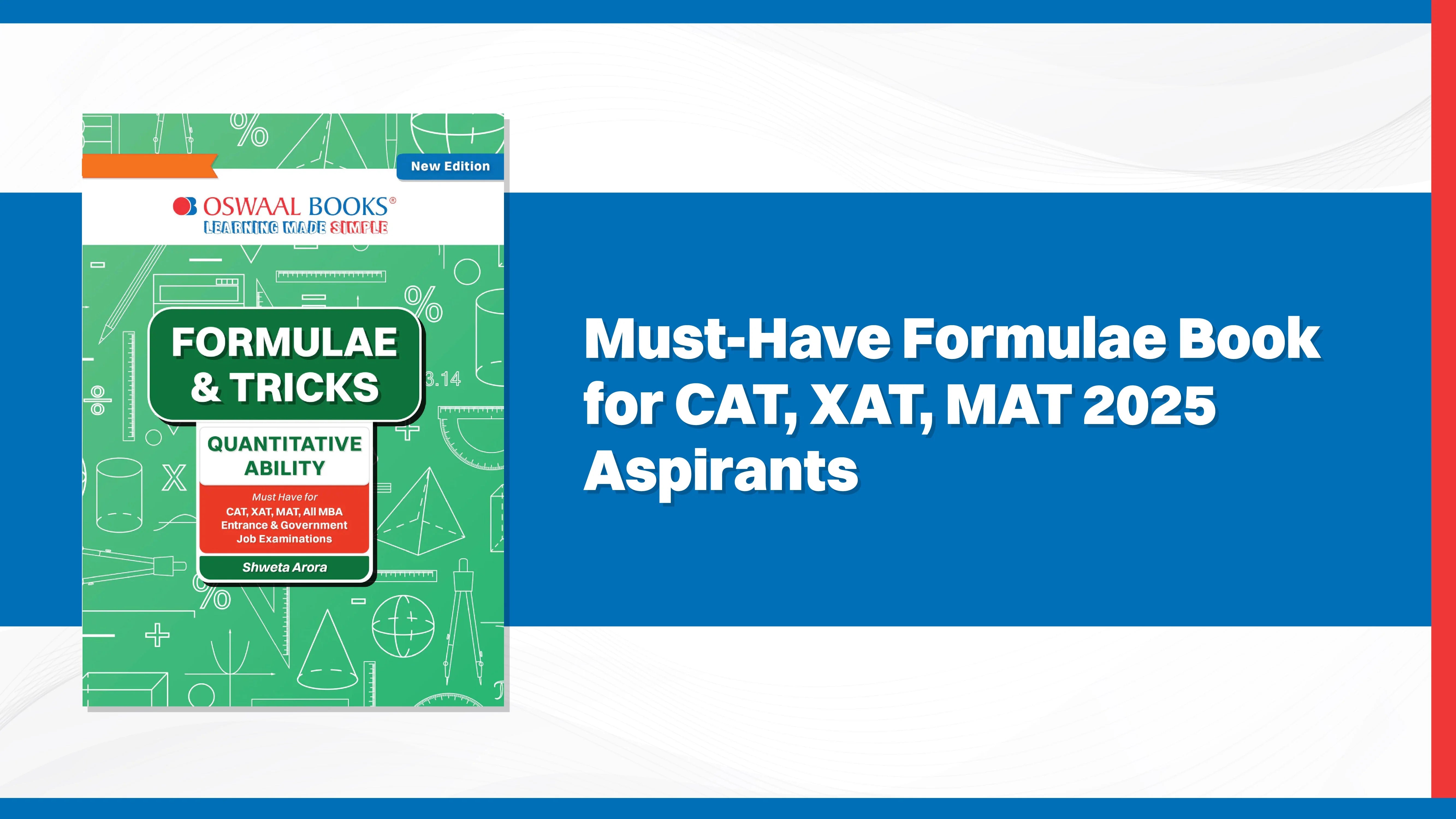It may appear to be a difficult task to crack the CAT 2025 exam in a mere three months, but with the right focus, strategy and discipline, it is very well possible. The Common Admission Test is not only about knowledge testing- it is a test of time management, accuracy, and problem-solving under pressure. A lot of aspirants have gone on to earn 99+ percentiles in just 90 days of focused preparation, and you can too because there is a structured plan.
In this blog, we will discuss a 3 month CAT preparation schedule to cover VARC (Verbal Ability and Reading Comprehension), DILR (Data Interpretation and Logical Reasoning), and Quantitative Aptitude. We will also point out the balance between mocks, practice, and revision, and will include such resources as books with CAT previous years question papers, CAT books, CAT VARC mock test, and DILR mock test for CAT into your schedule.
Why 3-Month Plan is Effective to CAT 2025?
Although a year-long study plan is the best, a 3-month plan will help you eliminate distractions, focus on high-yield topics, and practice in an exam-like environment. CAT is not the time you spend in preparing but how wisely you practice in the allocated time.
The exam tests three broad sections:
-
VARC (Verbal Ability and Reading Comprehension) – 24 questions
-
DILR (Data Interpretation & Logical Reasoning) – 20 questions
-
Quantitative Aptitude (QA) – 22 questions
With 66 questions in total and 2 hours to solve them, efficiency matters more than anything.
Read More: What is the Age Limit for CAT?
Month-by-Month Prep Strategy
Here is a 90-day plan that provides enough coverage of the three sections.
Month 1 – Foundation and Familiarity
-
Know the CAT pattern well
-
Attempt at least 1-2 sectional tests of each subject.
-
Start revising books of CAT previous years question papers to look at trends.
-
Develop a reading habit (editorials, business journals etc.) in VARC.
-
Revise arithmetic and elementary algebra concepts in Quant.
-
One CAT VARC mock test and one DILR mock test per week.
Month 2 -Practicing and Strengthening
-
Work on mid-level sets in DILR.
-
Practice reading comprehension using RC passages on a daily basis to enhance reading speed and accuracy.
-
Begin intensive revision of arithmetic, algebra and geometry in Quant.
-
Have two full-length mocks a week.
-
Keep on with sectional mocks to improve.
Month 3 - Intensive Mocks and Refinement
-
Solve 1-2 mocks alternately.
-
Study mocks in detail (do more analysis than trying).
-
Review shortcuts, strategies, formulae.
-
Concentrate on precision rather than on attempts.
-
Revise using CAT books and PYQs to revise quickly.
Section-Wise Weekly Target
|
Section |
Weekly Hours (Month 1) |
Weekly Hours (Month 2) |
Weekly Hours (Month 3) |
|
VARC |
12 hours (Reading + RC practice) |
14 hours (Mocks + RC sets) |
16 hours (Intensive mocks + analysis) |
|
DILR |
10 hours (Basic puzzles + sets) |
12 hours (Mixed-level sets + DILR mock test for CAT) |
14 hours (Advanced sets + full-length mocks) |
|
Quant |
12 hours (Arithmetic & Algebra) |
14 hours (Geometry, Modern Math) |
16 hours (Mixed problem sets + speed drills) |
Section-Wise Detailed Plan
1. VARC (Verbal Ability & Reading Comprehension)
CAT carries the highest weight in VARC section. The secret to its mastering is reading, practice, comprehension exercises, and mock trials.
Reading Comprehension (RC):
Do 2-3 RC sets per day, focusing on speed and accuracy. Use editorials, research articles, and business reports to reinforce the understanding.
Verbal Ability
Para-jumbles, para-summary, and odd-sentence out. These questions are logical reasoning questions in language, not grammar.
Mocks:
Practice 1-2 CAT VARC mock test papers a week initially, and then raise to 3-4 in the final month.
2. DILR (Data Interpretation & Logical Reasoning)
DILR is erratic and can be the game changer in CAT. It is necessary to develop stamina in solving long sets.
Data Interpretation
Practice in bar graphs, line charts, caselets and tables. Start with easy sets and increase to mixed, tricky sets.
Logical Reasoning
Concentrate on puzzles, sitting plans, tournaments, and conditional thinking.
• Mocks:
Start with 1 DILR mock per week before CAT and increase to 3 per week in the final one month.
3. Quantitative Aptitude
Quant requires conceptual clarity and speed of solving the problems. In three months, you must focus on topics of high weightage.
-
Arithmetic: Percentages, ratios, averages, and time-speed-distance.
-
Algebra: Equation, inequality, functions, progressions.
-
Geometry: Circles, triangles, mensuration.
-
Contemporary Math: Permutation, probability, set theory.
Daily practice is the key but also revising through books of CAT previous years question papers to understand the type of problems that recur.
High-Weightage Topics by Section
|
Section |
Topics to Prioritize |
|
VARC |
Reading Comprehension, Para-jumbles, Para-summary |
|
DILR |
Caselets, Bar Graphs, Seating Arrangement, Venn Diagrams |
|
Quant |
Arithmetic (40% weight), Algebra, Geometry, Modern Math basics |
Can 3 months of preparation be enough for CAT 2025?
It can take 3 months, but it is enough in case you concentrate on the topics that are the most important or practice regularly. A large number of toppers have scored in CAT within this time by putting in 6-8 hours a day. Consistency, analysis of mocks and books to practice CAT previous years question papers is the key to knowing the pattern of questions.
How many mock tests can I take in 3 months?
The first month, do 1-2 mocks per week to get comfortable. After the second month, start doing 2 full-length mocks per week. In the last month, do 4-5 mocks per week, including CAT VARC mock test and DILR mock test for CAT to make improvements in each section. Do not forget that analysis of mocks is important as taking them.
What is the section I should work on most in 3 months?
Preferably, work on your weakest area. VARC and Quant tend to be more time-consuming as they require an understanding of a concept and its clarity. DILR cannot be predicted, but with practice, it can be learned to recognize various set types. The practice of using CAT books is very helpful in doing sectional practice.
Is it important to solve past year CAT papers?
Absolutely. Solving books of CAT past year question papers is a must because they demonstrate the actual exam pattern, level of difficulty and frequently appearing question types. The high-frequency concepts which can be identified by the help of PYQs can be used to maximize your score.
What daily routine should a 3-month CAT aspirant follow?
A suggested daily plan:
-
3 hours VARC (RC + verbal ability)
-
2 hours DILR (sets + puzzles)
-
3 hours Quant (topic practice)
-
1-2 hours mock test/analysis
This ensures balance while allowing flexibility to adjust focus areas.
Should I prioritize speed or accuracy in CAT?
Accuracy comes first. A 70% accuracy rate is better than attempting all questions with random guesses. With practice through CAT VARC mock test and DILR mock test for CAT, your speed naturally improves over time.
Practice Comprehensively with Oswaal360 Online Courses for CAT Exam
Practice Now with Free Oswaal360 Online Mock Test for CAT Exam
Final Thoughts
A 3-month CAT prep plan demands discipline, consistency, and smart strategy. Start with building concepts, strengthen through practice, and finish with intensive mocks and revisions. Remember, CAT is less about knowledge and more about how you apply that knowledge under time pressure.
By balancing VARC, DILR, and Quant, while revising through CAT books and books for CAT previous years question papers, you can maximize your chances of hitting a high percentile. Combine this with mock analysis, and you’ll be exam-ready in 90 days.














